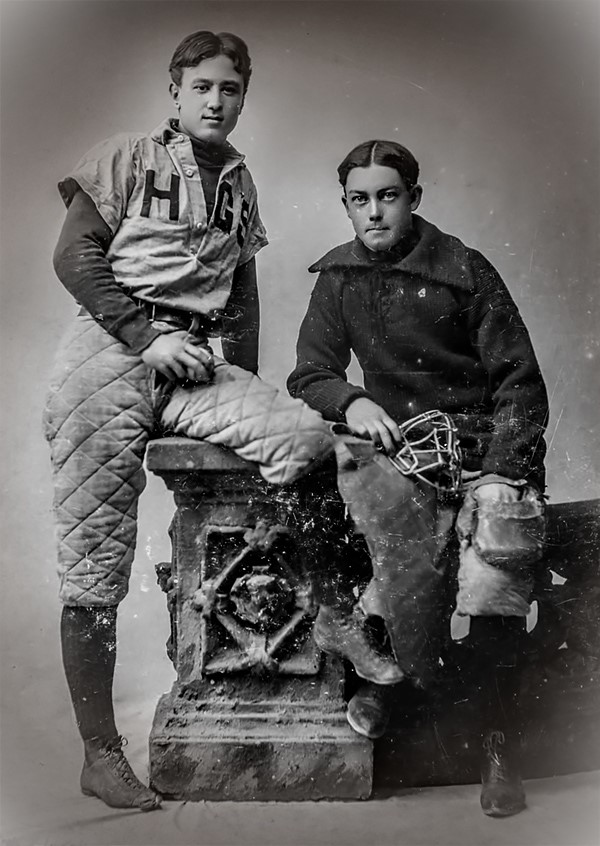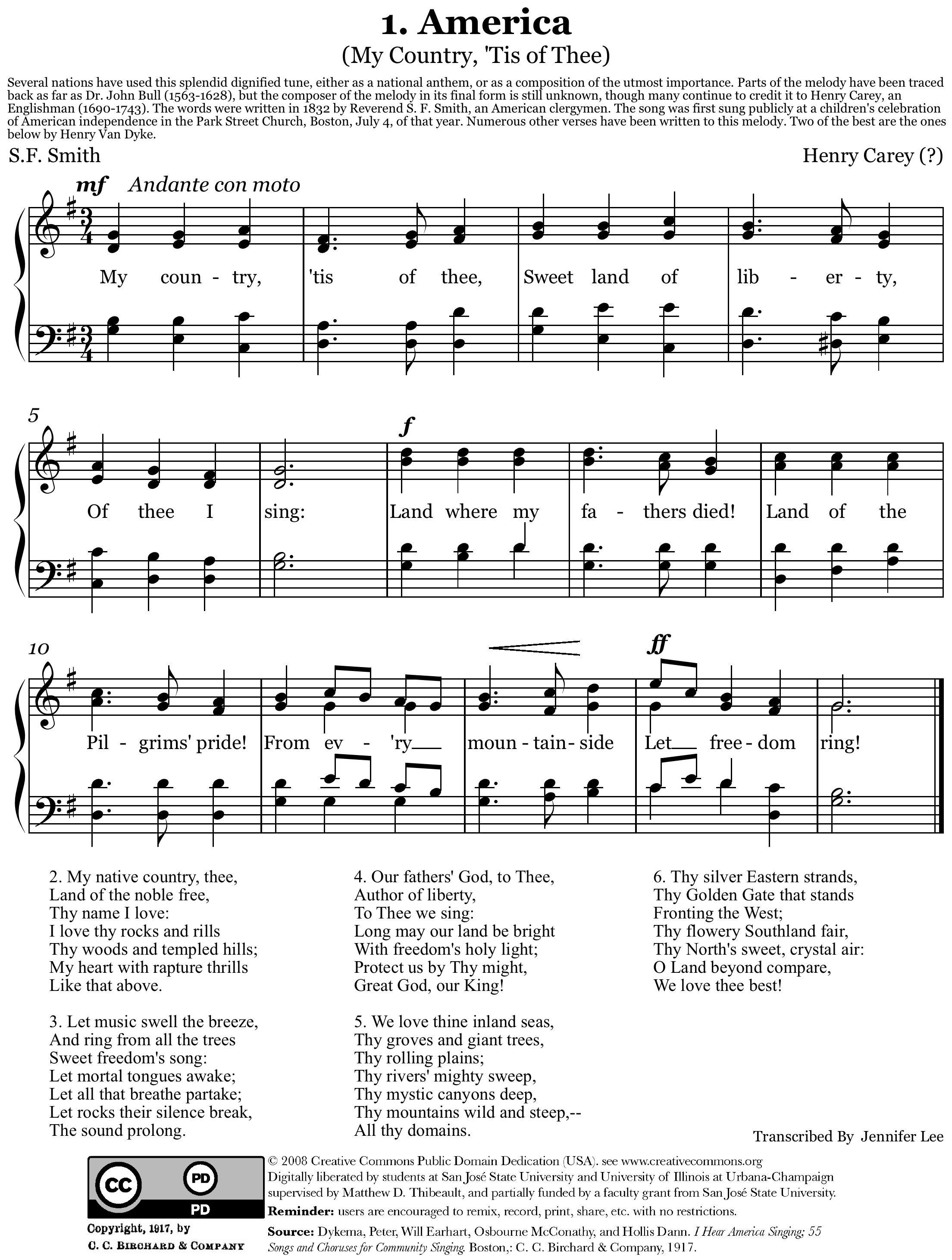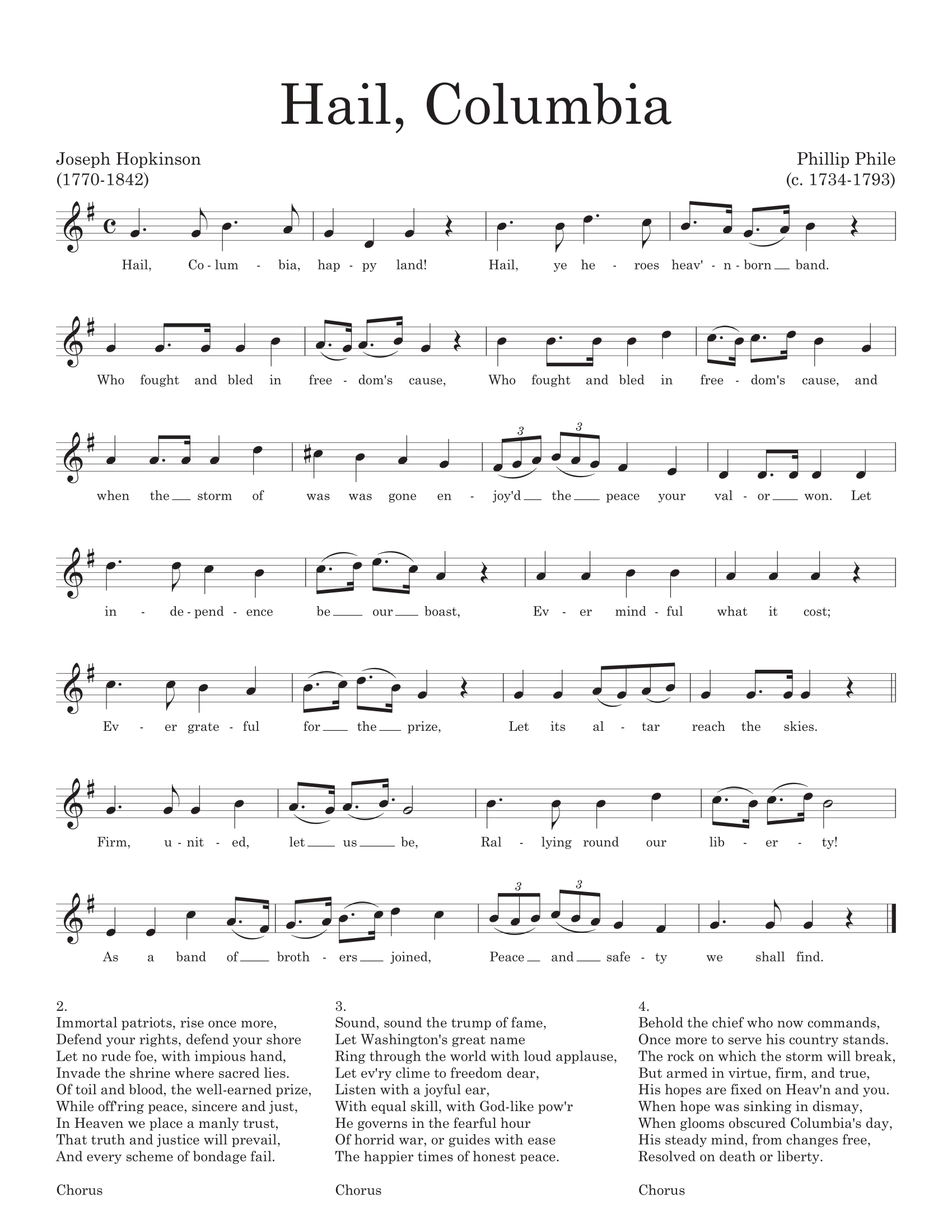|
Columbia, The Gem Of The Ocean
"Columbia, the Gem of the Ocean" is an American patriotic song which was popular in the United States during the 19th and early 20th centuries. Composed 1843, it was long used as an unofficial national anthem of the United States, in competition with other songs. Under the title "Three Cheers for the Red, White, and Blue," the song is mentioned in Chapter IX of MacKinlay Kantor's Pulitzer Prize-winning novel '' Andersonville'' (1955). It was also featured in the 1957 musical ''The Music Man''. In 1969, "Columbia, the Gem of the Ocean" was the music performed by a U.S. Navy Band embarked aboard USS ''Hornet'' as one of the ship's helicopters recovered the Apollo 11 astronauts from their capsule named ''Columbia'' after a splashdown in the Pacific Ocean. The melody of "Columbia, the Gem of the Ocean" is identical to that of the British patriotic song "Britannia, the Pride of the Ocean" and there is disagreement as to which song was adapted from the other. History The origin ... [...More Info...] [...Related Items...] OR: [Wikipedia] [Google] [Baidu] |
March (music)
A march, as a musical genre, is a piece of music with a strong regular rhythm which in origin was expressly written for marching to and most frequently performed by a military band. In mood, marches range from the moving death march in Richard Wagner, Wagner's ''Götterdämmerung'' to the brisk military marches of John Philip Sousa and the martial hymns of the late 19th century. Examples of the varied use of the march can be found in Ludwig van Beethoven, Beethoven's Symphony No. 3 (Beethoven), ''Eroica'' Symphony, in the Three Marches Militaires (Schubert), Marches Militaires of Franz Schubert, in the Marche funèbre in Frédéric Chopin, Chopin's Piano Sonata No. 2 (Chopin), Sonata in B flat minor, the "''Jäger March''" in the by Jean Sibelius, and in the Dead March in George Frideric Handel, Handel's ''Saul (Handel), Saul''. Characteristics Marches can be written in any time signature, but the most common time signatures are , (''alla breve'' , although this may refer to ... [...More Info...] [...Related Items...] OR: [Wikipedia] [Google] [Baidu] |
United Service Club
The United Service Club was a London gentlemen's club founded in 1815 for the use of senior officers in the British Army and Royal Navy – those above the rank of Major or Commander – and the club was accordingly known to its members as "The Senior". The club closed in 1978. Because of its emphasis on senior officers, it was considered the most prestigious of London's military clubs – reflected partly in its entry fees, which were the highest of any London club in the 1880s, although there has been some speculation this was a device to limit the number of new members. History The year after it was founded, in 1816, the Club moved into its first premises in Albemarle Street. Three years later, in 1819, it moved to Charles Street and in 1828 to a purpose-built clubhouse at 116 Pall Mall, designed by the noted architect John Nash.Jackson (1937) The club house, on the corner with Waterloo Place, was built between 1826 and 1828. Its style, displaying military friezes along the ... [...More Info...] [...Related Items...] OR: [Wikipedia] [Google] [Baidu] |
Charles Ives
Charles Edward Ives (; October 20, 1874May 19, 1954) was an American modernist composer, one of the first American composers of international renown. His music was largely ignored during his early career, and many of his works went unperformed for many years. Later in life, the quality of his music was publicly recognized through the efforts of contemporaries like Henry Cowell and Lou Harrison, and he came to be regarded as an "American original". He was also among the first composers to engage in a systematic program of experimental music, with musical techniques including polytonality, polyrhythm, tone clusters, aleatory elements, and quarter tones. His experimentation foreshadowed many musical innovations that were later more widely adopted during the 20th century. Hence, he is often regarded as the leading American composer of art music of the 20th century. Sources of Ives's tonal imagery included hymn tunes and traditional songs; he also incorporated melodies of the tow ... [...More Info...] [...Related Items...] OR: [Wikipedia] [Google] [Baidu] |
United States Marine Band
The United States Marine Band is the premier band of the United States Marine Corps. Established by act of Congress on July 11, 1798, it is the oldest of the United States military bands and the oldest professional musical organization in the United States. Today, the Marine Band includes the Marine Chamber Orchestra and Marine Chamber Ensembles. The Marine Band is entirely separate from its sister military band, the United States Marine Drum and Bugle Corps ("The Commandant's Own") and the 10 active duty Marine Corps field bands. The Marine Band has been uniquely known as "The President's Own" since 1801 due to its historical connection to the President of the United States. The relationship between the Marine Band and the White House began on New Year's Day 1801 when President John Adams invited the band to perform at the Executive Mansion. Later that year, Thomas Jefferson initiated the tradition of Marine Band performances by requesting that it perform at his inauguration ... [...More Info...] [...Related Items...] OR: [Wikipedia] [Google] [Baidu] |
Presidency Of Abraham Lincoln
The presidency of Abraham Lincoln began on March 4, 1861, when Abraham Lincoln Abraham Lincoln ( ; February 12, 1809 – April 15, 1865) was an American lawyer, politician, and statesman who served as the 16th president of the United States from 1861 until his assassination in 1865. Lincoln led the nation thro ... was United States presidential inauguration, inaugurated as the List of presidents of the United States, 16th president of the United States, and ended upon his Assassination of Abraham Lincoln, assassination and death on April 15, 1865, days into his second term. Abraham Lincoln, Lincoln was the first member of the recently established Republican Party (United States), Republican Party elected to the presidency. Lincoln successfully presided over the Union (American Civil War), Union victory in the American Civil War, which dominated his presidency and resulted in the end of slavery. Lincoln took office following the 1860 United States presidential ele ... [...More Info...] [...Related Items...] OR: [Wikipedia] [Google] [Baidu] |
VOA Transmitter Tangier
Voice of America (VOA or VoA) is the state-owned news network and international radio broadcaster of the United States of America. It is the largest and oldest U.S.-funded international broadcaster. VOA produces digital, TV, and radio content in 48 languages which it distributes to affiliate stations around the globe. It is primarily viewed by a non-American audience. VOA was established in 1942, and the VOA charter (Public Laws 94-350 and 103–415) was signed into law in 1976 by President Gerald Ford. VOA is headquartered in Washington, D.C., and overseen by the U.S. Agency for Global Media (USAGM), an independent agency of the U.S. government. Funds are appropriated annually under the budget for embassies and consulates. In 2016, VOA broadcast an estimated 1,800 hours of radio and TV programming each week to approximately 236.6 million people worldwide with about 1,050 employees and a taxpayer-funded annual budget of . While Voice of America is seen by some foreign liste ... [...More Info...] [...Related Items...] OR: [Wikipedia] [Google] [Baidu] |
My Country Tis Of Thee
"America (My Country, 'Tis of Thee)" is an American patriotic song, the lyrics of which were written by Samuel Francis Smith. The song served as one of the ''de facto'' national anthems of the United States (along with songs like "Hail, Columbia") before the adoption of "The Star-Spangled Banner" as the official U.S. national anthem in 1931. The melody used is the same as that of the national anthem of the United Kingdom, "God Save the King". History Samuel Francis Smith wrote the lyrics to "America" in 1831 while a student at the Andover Theological Seminary in Andover, Massachusetts. The use of the same melody as the British royal anthem can be described as a contrafactum which reworks this symbol of British monarchy to make a statement about American democracy. Well-known composer Lowell Mason had requested that Smith translate or provide new lyrics for a collection of German songs, among them one written to this melody. Smith gave Mason the lyrics he had written, and the ... [...More Info...] [...Related Items...] OR: [Wikipedia] [Google] [Baidu] |
Yankee Doodle
"Yankee Doodle" is a traditional song and nursery rhyme, the early versions of which predate the Seven Years' War and American Revolution. It is often sung patriotically in the United States today. It is the state anthem of Connecticut. Its Roud Folk Song Index number is 4501. The melody is thought to be much older than both the lyrics and the subject, going back to folk songs of Medieval Europe. Origin The tune of "Yankee Doodle" is thought to be much older than the lyrics, being well known across western Europe, including England, France, Netherlands, Hungary, and Spain. Johnson, Helen Kendrick The melody of the song may have originated from an Irish tune "All the way to Galway" in which the second strain is identical to Yankee Doodle. The earliest words of "Yankee Doodle" came from a Middle Dutch harvest song which is thought to have followed the same tune, possibly dating back as far as 15th-century Holland. It contained mostly nonsensical words in English and Dutch: "Ya ... [...More Info...] [...Related Items...] OR: [Wikipedia] [Google] [Baidu] |
Hail, Columbia
"Hail, Columbia" is an American patriotic song and ceremonial entrance march of the vice president of the United States. It was originally considered to be one of the unofficial national anthems of the United States until 1931, when "The Star-Spangled Banner" was named as the official national anthem. Columbia is the name for the national personification of the United States which originated during the 18th century. History The music was composed by Philip Phile in 1789 for the first inauguration of George Washington and titled "The President's March". It became the song "Hail, Columbia" when arranged with lyrics by Joseph Hopkinson in 1798. The song gained popularity during the XYZ Affair and subsequent Quasi-War with France. The song was used in the United States as a de facto national anthem throughout the 19th century. However, the song lost popularity after World War I until it was replaced by "The Star-Spangled Banner" in 1931. It was the personal anthem for the presi ... [...More Info...] [...Related Items...] OR: [Wikipedia] [Google] [Baidu] |
William Studwell
William Emmett Studwell (18 March 1936 – 2 August 2010) was an American librarian who became known for his knowledge of carols. Biography William Studwell was born in Stamford, Connecticut and he studied history at the University of Connecticut. Fight songs The University of Notre Dame song is one of the most recognizable collegiate fight songs in the United States. Studwell ranked the song first, and said it was "more borrowed, more famous and, frankly, you just hear it more." Christmas carols Studwell had started to choose a carol for each year starting in 1986 when he chose the Ukrainian ''Carol of the Bells''. Studwell took an academic interest in carols which he had spent over 6,000 hours in study. Before Christmas each year he would announce the new carol and he would be invited to interviews with the media where he was quizzed on his choice. Studwell died in Bloomington Hospital in 2010. The day before he died he dictated a letter to his daughter which recorded his se ... [...More Info...] [...Related Items...] OR: [Wikipedia] [Google] [Baidu] |
Fenian
The word ''Fenian'' () served as an umbrella term for the Irish Republican Brotherhood (IRB) and their affiliate in the United States, the Fenian Brotherhood, secret political organisations in the late 19th and early 20th centuries dedicated to the establishment of an independent Irish Republic. In 1867 they sought to coordinate Fenian raids, raids into Canada from the United States with a Fenian Rising, rising in Ireland. In the Easter Rising, 1916 Easter Rising and the 1919–1921 Irish War of Independence, the IRB led the republican struggle. Fenianism Fenianism ( ga, Fíníneachas), according to O'Mahony, embodied two principles: firstly, that Ireland had a natural right to independence, and secondly, that this right could be won only by an armed revolution. The name originated with the Fianna of Irish mythology – groups of legendary warrior-bands associated with Fionn mac Cumhail. Mythological tales of the Fianna became known as the Fenian Cycle. In the 1860s, oppone ... [...More Info...] [...Related Items...] OR: [Wikipedia] [Google] [Baidu] |
British Museum
The British Museum is a public museum dedicated to human history, art and culture located in the Bloomsbury area of London. Its permanent collection of eight million works is among the largest and most comprehensive in existence. It documents the story of human culture from its beginnings to the present.Among the national museums in London, sculpture and decorative and applied art are in the Victoria and Albert Museum; the British Museum houses earlier art, non-Western art, prints and drawings. The National Gallery holds the national collection of Western European art to about 1900, while art of the 20th century on is at Tate Modern. Tate Britain holds British Art from 1500 onwards. Books, manuscripts and many works on paper are in the British Library. There are significant overlaps between the coverage of the various collections. The British Museum was the first public national museum to cover all fields of knowledge. The museum was established in 1753, largely b ... [...More Info...] [...Related Items...] OR: [Wikipedia] [Google] [Baidu] |









